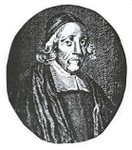Aspects of Piety 10
Some Examples 1 It is perhaps the superior homiletical and literary quality of his work that stands out in Adams. It is one of the things that makes him notable. In these areas he shows strength at every point. 1. There are the very titles of some sermons (Baker says that ‘the many provocative titles of Adams’ sermons’ suggest that ‘he appealed to the popular taste for the sensational evident in the drama of his time.’) The works contain nearly 60 different ones. Many are striking. For example, A generation of serpents; Mystical Bedlam; The sinner’s passing bell; England’s sickness; The Black Saint; Majesty in misery; The White Devil; Spiritual Eye-salve; Love’s copy. Giving good titles to sermons is perhaps a dying art in some quarters that could be usefully revived. 2. He often has good introductions. For example A true Christian’s life is one day of three meals, and every meal hath in it two courses. His first meal is … to be born a sinner, and to be new born a saint. … His second meal is … to do well, and to suffer ill. … His third meal is, … to die a temporal death, to live an eternal life. Or The great bishop of our souls now being at the ordination of his ministers, having first instructed them in via Domini, doth here discipline them in vita discipuli; ...
(Works 3, p 22; Works 2, p 109)
3. Angus commends the choice of texts, each of which is for him a sermon in itself. ‘Have we rightly appreciated in the modern pulpit’ he asks ‘the importance of a good text?' (p xxv)’ Sometimes the texts are carefully placed in their context; often they are not. The printed sermons range from Genesis to Revelation. Some 27 are from Old Testament texts. Over 60% of these are, perhaps unsurprisingly, from the wisdom books. (John H Primus, Richard Greenham: Portrait of an Elizabethan Pastor, Macon, Georgia, Mercer UP, 1998 notes that Greenham had a similar preference for Psalms and Proverbs). Of the 38 New Testament texts, over 30% are from the Gospels and nearly half from Paul and Hebrews. In some instances we have brief consecutive series of sermons (Series of consecutive sermons are found on Ge 25:27 (2); Ps 66:12, 13 (3); God’s bounty Pr 3:16 (2); The fatal banquet Pr 9:17, 18 (4); Je 8:22 (4); Mt 2:11, 12 (2); Ep 5:2 (3); Heb 6:7, 8 (5)
4. The structure of the sermons is not the later Puritan pattern of exposition, then doctrine then uses or application. Among stranger approaches include The Gallants Burden which includes sketches, in the tradition of the medieval descriptio, of four ‘scorners’ who destroy the commonwealth - atheists, epicures, libertines and ‘common profane’ clergy; the way The White Devil includes a series of 12 characters modelled on Joseph Hall and, most unusually, the examination of the nature, cause, symptoms and cure of 19 bodily diseases with an allegorical scrutiny of parallel vices that plague the soul, in Diseases of the Soul from 1616. Other examples are the figure of the hunt in Politic Hunting (1629) where he structures his characters of the powerful who prey on the weak by picturing the depopulator as a wild boar, the cheater as a crafty fox, the usurer as a wolf, the grain engrosser as a badger. We have mentioned his approach in A Generation of Serpents (1629), he uses a similar one in his references to thorns, briars and brambles rending the flesh of the commonwealth in A Forest of Thorns, 1616. In Eirenopolis he allegorises London’s gates in an appeal for peace amid the growing factionalism of the time.
Even when his sermon structure is formally typical, Adams often transcends it with striking ways of presenting the material. On Heb 13:8 he has three points but speaks, most engagingly, of a centre, a circumference and a mediate line. The immovable centre is Jesus Christ. The circumference, that runs around about him here, is eternity …. The mediate line referring them is, ó aùtos, the same: …
In one particularly striking example, on Ecc 9:3, he takes the phrases in order The heart of the sons so men is full of evil, then and madness is in their heart while they live:, finally and after that they go to the dead. His powerful imagination is so active that he comes up with no less than six conceits in which to couch his three points. Grammar - man’s comma, colon, period; journey – setting forth, peregrination, journey’s end; arrow – born from the bow, wild flight, into the grave; argument – harsh and unpromising proposition, wickedness; hopeless proposition, madness; inevitable conclusion, death; race - man’s beginning full of evil, the further he goes the worse it is, in frantic flight he falls into the pit; stairs – a three step descent.







No comments:
Post a Comment